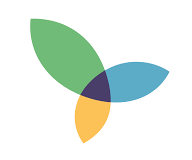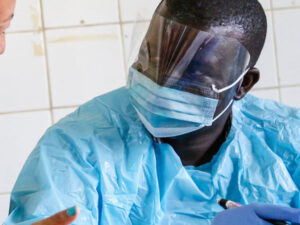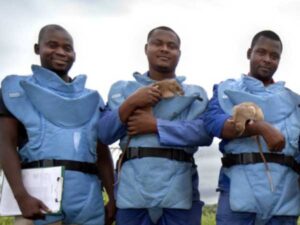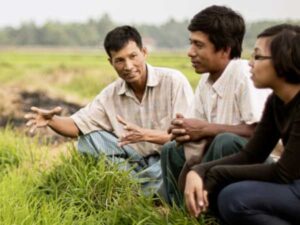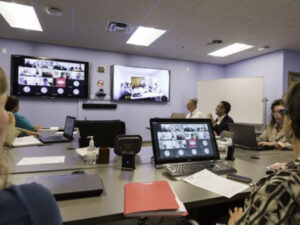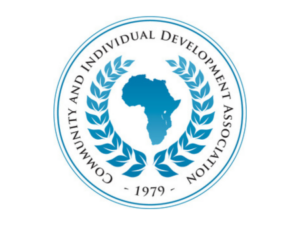Collaborating for Resilience (CoRe) reduces environmental resource competition by providing tools to civil society organizations to catalyze collective action. They work to influence policy and investor priorities and strengthen livelihood resilience.
Blake Ratnew of Collaborating for Resilience (CoRe) spoke with Ambika Samarthya-Howard on November 2, 2023. Click here to read the full conversation with insights highlighted.
Ambika Samarthya-Howard: Tell me a little bit about yourself and about the organization and what you work on, what your issue area is.
Blake Ratner: My name is Blake Ratner. I’m representing an organization that I founded called Collaborating for Resilience. We go by CORE for short. The organization is focused on supporting civil society partners so we can build effective dialogue between government, community, and private sector actors to build resilient livelihoods. With these connections, the government can be more responsive to community initiatives around the issues of forests, fisheries, water, and land, which are critical to growing livelihoods.
Ambika Samarthya-Howard: Can you explain what you do exactly? Are you a direct service organization, and what’s your approach? Who’s your audience? I understand your mission, and would love to hear more about how you carry it out.
Blake Ratner: We don’t directly implement field programs. We play the role of a catalyst or an intermediary to help support organizations that are already well-rooted in their country. We work to see how they can achieve impact on a greater scale by building these connective tissues and establishing multi-stakeholder platforms that can lead to lasting governance improvements.
Ambika Samarthya-Howard: Can you give me some examples of how you’ve done that?
Blake Ratner: An example that was critical in trying to establish and show the viability of this approach was working with a network of community fishery organizations in Cambodia, around Tonle Sap. Tonle Sap is the largest freshwater lake in Southeast Asia, and the source of food and livelihood for a basin with a population of about 5 million people. The key constraint at that time was competition over access to fishing grounds that community fishers relied upon. A lot of the lake was taken up by concessions to commercial fishing operations, which was a hugely productive system. Nevertheless, there was so much exclusion it was hard for many people to make a living. We decided from the outset that we wanted to not only support the community fisher organizations, but to directly involve key government authorities, like the Fisheries Administration and domestically, the Independent Policy Research Institute to jointly conceive and own the initiative with the goal of supporting the livelihoods and the viability of community fisheries.
We found that in this very conflictual environment, if you start at the local level by creating a safe space for dialogue, you can build a joint understanding of what constraints are holding back these livelihood opportunities. You can work up from that scale to the next, and bring in local government actors at the provincial level, and basically everyone who has a stake in this issue. That includes not just the communities or the regulators, but also the military police, for example, that are involved in enforcement.
We found that by helping to build these connections and working with these groups to build skills to identify the sources of problems and then trace pathways to their influence, the network we were working with was able to achieve a regulatory success in terms of convincing the government to make a transition from commercial fishery allocation to community access, essentially turning it over to communities. Subsequently, they were more capable of engaging other organizations, all the way up to the National Assembly, to get additional lines of policy support beyond the direct Fisheries’ Administration to build out the constituency for reform. Because they were more capable and connected, they were ultimately able to advocate effectively for a national reform. This eventually meant the transfer of commercial fisheries across the country to community management. That’s the biggest such reform in freshwater fisheries in all of Southeast Asia.
Ambika Samarthya-Howard: What’s evidence for you? Could you describe how you as an organization measure success?
Blake Ratner: We’re working with some growing initiatives in India that are looking to measure the acres of landscape that are the focus of restoration action. So in the case of restoring watersheds and pasture lands, the key measure is the millions of people who are benefiting because of these improved ecosystems. [Another measure would be the impact on] agricultural productivity and local incomes.
We’re also measuring things that are intermediate because that kind of restoration cycle might take a decade or more. So you have to be able to measure the ability of community-led initiatives to engage with and get support from the government. One key measure of that is whether budgets are being allocated through decentralized planning systems towards community-led restoration efforts.
Another one is the influence these local innovations are having on policy implementation. If, as in many cases, like the Indian case for example, it’s at the state level, then broad national policy really gets adapted and implemented and codified. There are opportunities to influence how that happens. If they’re looking to local examples and saying, “Okay, here’s an experience of community-related restoration where they’ve used native species rather than bringing in eucalyptus trees, and that’s shifted the approach of government,” that’s also an early sign of successful influence.
Ambika Samarthya-Howard: That makes sense. What hasn’t worked that you think is a lesson that people could learn from? When I ask this, people often say “There’s a lot.” Is there something that’s unique to your organization?
Blake Ratner: One of the things that we’re grappling with now is how to distill these principles so they’re simple enough for others to understand and apply, but still hold enough rigor that they’re making a difference. A lot of people will talk, for example, about consensus building approaches and ideas, asking: What can we all agree on? In fact, that’s not what we’re doing. We recognize that if you’ve got agro-industry investors and local communities who are looking to make use of the same landscape, they’re actually not going to agree on everything. Can we reduce the degree of potential conflict and get things more aligned? That’s what we’re aiming for. So that’s just an example of saying that when we talk about building these dialogue platforms, there are some aspects that we look to and ask, “Is this really done in a way that’s rigorous? Is it inclusive of voices that are usually left out of the process?” Whether those are tribal voices or women’s voices, and so forth.
Ambika Samarthya-Howard: Everybody wants more money, but outside of that, what’s something that you feel has been a limitation or challenge that you haven’t overcome? I appreciate your lesson, but on the flip side of that, what is an instance of where you think your approach can only go so far?
Blake Ratner: We know that we can bring people together in person, work through a process over a week, then follow up to give people a chance to apply things so they can understand and feel confident in applying this kind of multi-stakeholder dialogue approach. What we’re not sure of, and what we’ve been testing, is whether you get similar results if you’re not actually sitting together, and are doing that kind of convening remotely. As we’re trying to build that core capability, we’ve done these kinds of hybrid approaches where we follow up remotely to check in with a cohort of field practitioners to see how they’re applying their skills and so forth. But we want to be able to drive the cost down and make it much more broadly accessible, so that’s still something that we’re testing out.
Ambika Samarthya-Howard: I assume that in all of the work you do as a catalyst, you still see a systems level change?
Blake Ratner: That’s what we’re aiming for, yes.
Ambika Samarthya-Howard: What actors are you working with on the systems level? What do you want in those actors? What do you need from those actors?
Blake Ratner: First, I would say civil society organizations themselves. We’re working with them as partners to be able to both envision and then work systematically to address issues at a higher scale. It’s about making that leap from saying, “We’re really good community organizers” to “We have a pathway to influence with the government.” Or, “We have a way to raise the stakes in terms of getting private sector investors involved in these decision making processes.”
That’s one part of it. Another part is on the government side, where sometimes there are opportunities where you have evidence of something that’s working locally and can say, “Okay, this already fits with an existing policy commitment.” But often it takes more than that. It takes somebody who can make the personal connections, who can bring somebody to the field to see the change that’s happening, [to witness] the results of restoration efforts.
For example, it might take waiting and looking for that particular opportunity when the pressure is right. Part of the reason why such a big shift was possible in the case I mentioned in Cambodia was that it was also an election cycle, and there was, no doubt, political calculation about saying, “Okay, on the one side, there are those benefiting from the current commercial allocation system, but on the other side, there’s a much larger constituency that would stand to benefit with a change towards community-based management.”
Ambika Samarthya-Howard: That’s really interesting. How do you see your work evolving in the next five or ten years? What’s next?
Blake Ratner: We see ourselves at the stage of demonstrating the applicability of this multi-stakeholder dialogue approach in different contexts, and figuring out how to make that kind of toolkit more accessible.
Ambika Samarthya-Howard: How long has your organization been around?
Blake Ratner: Almost five years, so we’re just at that point where we’re gathering enough evidence about what’s working that we’ve got lots of good stories to tell. We need to organize that in a way that’s going to be convincing to different audiences, which means getting governments to think about the policy implementation side, connecting with foundations, and getting bigger funders, like the multilateral agencies. There’s an opportunity to make good on what is already very popular to say: “We like to support multi-stakeholder processes.” We want to bring some rigor to that so we can actually demonstrate the outcomes and additional value that come from it.
Ambika Samarthya-Howard: Is your goal, then, gathering more use cases and more evidence?
Blake Ratner: Yes. That’s sort of the stage we’re at now. Our vision is to be able to build out a broad network of hundreds, possibly thousands, of civil society organizations across a few dozen countries so there’s a vibrant network of exchange. Primarily within regions in South and Southeast Asia and Africa and Latin America, but also to some degree across regions where there are great opportunities for learning.
Ambika Samarthya-Howard: As the whole idea of this platform is to serve as a platform for insights, are there any insights that you’d like to share with the community?
Blake Ratner: One of the things that I get told a lot is that at first, what we do sounds like a little bit of what everybody’s trying to do. You get people to work together, you cooperate and collaborate, and that sounds good. But as you go deeper, you recognize there are actually some pretty clear distinguishing factors here. The important lesson I’ve found is to not shy away from those, and to really hone in on these distinguishing elements. Because that becomes what others call “the secret sauce.”
Ambika Samarthya-Howard: Can you describe some of those?
Blake Ratner: I was alluding to one earlier, and talking about the difference between full consensus versus alignment. I guess another one, which is also one of the questions we’ve been asked, is what’s an efficient way to build these multi-actor platforms? These kinds of sustained dialogue efforts bring together different sectors at a reasonably local scale, like watershed, subdistrict, or district. It might be several hundred villages, that kind of scale. At the beginning there was an expectation to say, “Can we boil this down so there’s one blueprint to do it?” What we found is that that doesn’t really make sense. The context is so different in terms of government interest in supporting these initiatives, in the availability of NGOs, in civil side organizations who might be allies, in the extent of competition with private sector interests, that sort of thing.
What we call the governance context can be very different even within a state within the same country, so we had to develop a process for assessing that governance context and a menu of options. People still need a vocabulary to be able to identify how where I’m working is different from where you’re working, and not just to say, “Oh, you’d have to live here 10 years as well to understand.” People need to be able to quickly describe those differences, then to translate that into a rationale for design choices.
We boiled it down that way, and people really appreciated having a language to talk about design choices for building multi-actor platforms. So we ask questions like: Are you being very narrow in terms of issues? Are you taking on a set of closely linked issues, like water supply and agricultural productivity? Are you doing something quite a bit broader about women’s entrepreneurship and landscape restoration? This will highlight choices like: Are you involving the private sector early on? Are you waiting to try to build a certain credibility before you even enter into that side of the discussion? Field practitioners have found that having a literal menu of options on a page is really valuable, as they can quickly compare and visually show the choices they’ve made versus the choices you’ve made. Then they can test how well it works in different environments.
Ambika Samarthya-Howard: That’s awesome. Is there anything else you want to add?
Blake Ratner: Yes, one more thing. When building this network of exchange across countries, we have found that things get very divided. You’ve got folks who are really specialized in Agroforestry, for example, that combination of tree planting and agriculture on sloping lands. Or you’ve got folks who are really focused on coastal fishery management. And folks who are really focused on improving the management of pasture lands.
On the technical side, being an ecologist or an agriculturist is very different. But on the people side, there’s actually a lot of similarities between the mechanisms of exclusion and the barriers that people face in getting responsive governance and so forth. That’s part of what we’re trying to break through to create opportunities for learning across these somewhat different communities of practice and also across language barriers.
We found that being able to bring together practitioners from Latin America and West Africa, for example, working in French and Spanish, can be a little more difficult than working just within a sub-region. Making sure that we’ve designed things so people can share authentically and learn from each other also brings more opportunities for surprise, and we’ve found that people enjoy that.
Ambika Samarthya-Howard: That’s interesting. I could see how you could get very much mired in your specific niches, and how a moment where you can see something completely differently, is a moment of awe.
Blake Ratner: Like I mentioned earlier, our organization works as an intermediary. We’re trying to support the effectiveness of others. What I have found really humbling and motivating is when we find these partnerships and the partners that we’re working with, like Foundation for Ecological Security in India, or a new initiative called Common Ground, are working on this broader challenge of landscape restoration and rural livelihoods. If our partners become advocates for the importance of the work we do, in a sense that is more meaningful than any other metric I can come up with. It encourages our team to keep it up.
They’re providing that constant challenge to say, “Okay, we’ve dealt with this problem now of the local multi-actor platforms at the landscape scale. How can we think about working at the bigger scale and engaging state level governments effectively? How can we think about understanding the character of the emerging partner networks that we’re building? To what extent is that a coalition that is actually going to deliver change?” They keep challenging us to learn how we can continue to be supportive and effective.
Ambika Samarthya-Howard: Thank you for taking the time to talk with me today.
Click here to read the full conversation with insights highlighted.
Ambika Samarthya-Howard (she/her) is SJN’s Chief Innovation Officer: She leads on innovation and technology, leverages communication platforms for the network strategy and creates cool content. She has an MFA from Columbia’s Film School and has been creating, teaching and writing at the intersection of storytelling and social good for two decades. She has produced content for Current TV, UNICEF, Havas, Praekelt.org, UNICEF, UNFPA, Save the Children, FCDO, Global Integrity and Prism.
* This interview has been edited and condensed.
Read more insights on what’s working in social innovation.

